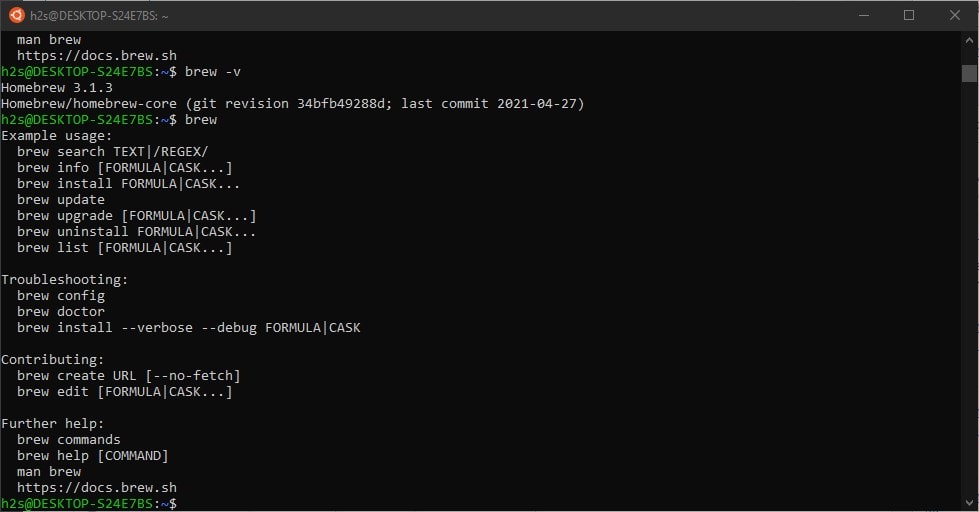
Home brew install install#
One of the important things it points out for us will be that the install script is going to create some subdirectories in the /usr/ directory. The cool thing about the Homebrew install script is that it will tell you what it’s going to do and prompt you for a yes or no before proceeding. This command is going to install Homebrew for us. We’re going to follow that by running this command in our terminal that we opened in step 1: /usr/bin/ruby -e "$(curl -fsSL )" The Homebrew homepage has the install information. Ironically, Homebrew is written in Ruby! Let’s get that installed.
Home brew install software#
Package managers will install software in a consistent manner and keep your computer tidy.Īs it turns out, macOS has an awesome package manager called Homebrew.

In this case, managing means installing, updating, and removing software as needed. Hold on! What’s a package manager? A package manager is an application whose job is to manage software on your computer. Let’s do that by installing a package manager. But as good software engineers and system administrators, we like to stay on top of things and install the updated versions when we can. If you don’t need the latest and greatest Ruby version, you could stop here.

The -v option tells the Ruby CLI to return the version of the Ruby installation to us. Here, we’re invoking the Ruby CLI and passing the option -v to it. Now let’s see which version of Ruby we have installed by typing in the following command: ruby -v If Ruby isn’t installed or available to us, the which command will let us know it couldn’t find Ruby. We passed Ruby as an argument, so the command is finding the Ruby executable location. The which command allows us to see where on the computer an executable file lives.
Home brew install mac#
Did you know that a version of Ruby comes installed on your Mac by default? We can see that by typing some commands into our terminal. When you open a terminal (assuming zero configuration), you start at your home directory.

Ruby is an open-source programming language with a strong developer focus.


 0 kommentar(er)
0 kommentar(er)
